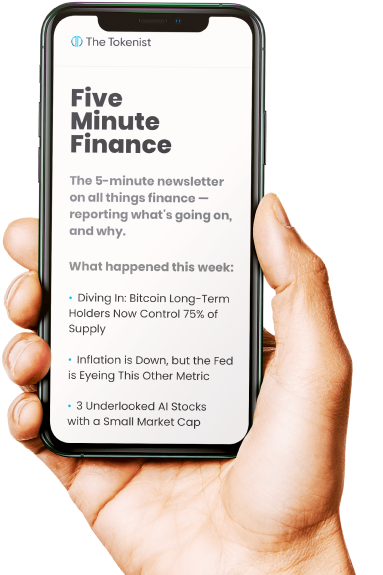
Bitcoin Bear Market: Is the Worst Over?
At a 16.77% loss for November, Bitcoin returns are in line with 16.23% loss in November 2022, following the FTX exchange disaster. Yet, no event of that magnitude occurred this year. In fact, Bitcoin’s price crash cannot be pinned down to any specific event related to the crypto sector.
Nearly two months ago, on October 6th, BTC price reached an all-time high of $126,198, only to topple to $82k by November 21st, a bottom last seen in early April this year. In other words, Bitcoin suffered its 13th death cross since 2011.
At that time a week ago, we posited that Bitcoin could regain its footing above the $90k resistance zone, a level now being tested as Bitcoin gained 5.5% over the week to the current price of $91,464. Making it one of the shortest bear periods, Bitcoin’s defensive zone is still within the $83k-$85k range.
According to Polymarket engagement, most people bet on BTC hitting $100k by the year’s end, at 48% probability, while 34% are betting on under $80k price. Let’s examine which drivers could be in play for either direction.
Bitcoin’s Crash Amid Strong Fundamentals
Although there is a distinct lack of specific events to blame for this month’s Bitcoin crash, it did not come out of nowhere. It is safe to say that President Trump’s abrupt announcement on additional 100% tariffs on Chinese imports was the main catalyst. This occurred on October 10th, as a response to the ongoing issue with China’s control of critical rare earth elements (REEs).
By the end of October, President Trump and Chinese President Xi Jinping came to an understanding, by which tariffs would actually be lowered while China would end its rare earths block. However, the initial tactical bluster earlier in October caused a near-$20 billion liquidation cascade.
In turn, this pressure transferred into spot-traded Bitcoin ETF outflows, which started to reverse on Wednesday.
In short, President Trump’s negotiation-positioning threat canceled ‘Uptober’, drying up liquidity through liquidations on long positions. Throughout 2025, this has been a constant theme, even to the point of President Trump being perceived by some as influencing markets to benefit his inner circle.
In either case, November has been a continuation of the canceled Uptober. Deutsche Bank analyst Marion Laboure noted on Monday the peculiarity of Bitcoin’s price pullback this time around.
“Unlike prior crashes, driven primarily by retail speculation, this year’s downturn has occurred amid substantial institutional participation, policy developments, and global macro trends.”
To put it differently, sentiment is now in play more so than in previous periods. And that sentiment is largely determined by short-term holders (STH), who are more sensitive to volatility and capitulations. At the moment, short-term holder realized price (STH-RP) is at $104k against the BTC price of $91.4k.
In other words, the typical “get my money back” sentiment from STHs could still cause Bitcoin rallies to fail. That is, if institutional players don’t counter STH-driven liquidity dynamics by posting large bids (buys). Some indicators already point in that direction.
Join our Telegram group and never miss a breaking digital asset story.
Institutional Recommitment to Digital Scarcity
A period of extreme fear is always the best time to gain exposure to an asset that has an even more limited supply than gold. When Bitcoin dropped to $87k on November 20th, this is when the Texas Blockchain Council bought $10 million worth of BTC via BlackRock’s IBIT ETF.
Likewise, New Hampshire’s Business Finance Authority (BFA) launched the first-ever $100 million BTC-backed municipal bond on November 17th. Prior to the market crash, at the end of September, the Abu Dhabi Investment Council (ADIC) tripled its IBIT exposure to 8.7 million shares.
In the same period, Harvard University, through Harvard Management Company, did the same, increasing its holdings by 260%, to 6.81 million IBIT shares. In subsequent filings that will be disclosed later, it is likely we will see plentiful institutional re-commitments during this slump period.
Such re-commitments could accelerate, especially if catalyzed once again by President Trump.
Changing of the Fed Guard
Despite facilitating the October liquidation spree with tariff threat, President Trump’s endorsement of the crypto sector during the presidential campaign, and afterwards, has served as the main macro backdrop that contributed to Bitcoin’s all-time high of $126k. Over the week, rumors re-ignited that President Trump is likely to name a new Federal Reserve Chair by Christmas.
Treasury Secretary Scott Bessent noted on Tuesday this scenario has a “very good chance” of happening, with Jerome Powell likely to be replaced by the director of the National Economic Council Kevin Hassett.
Over the years, we have covered extensively the public feud between Trump and Powell. Although it was Trump himself who appointed him in his first term, he targeted Powell by calling him “grossly incompetent” and “total moron”, to name just a few chosen labels.
The primary stumbling block has been Powell’s refusal to bring the Fed funds rate to ultra-low levels around 1%. With this background in mind, Hassett is therefore likely aligned with President Trump’s favored interest rate regime.
And given this remains largely unpriced by the market, accelerated rate cuts are likely to trigger a shift in risk-asset flows that Bitcoin historically responds to first. After all, the resulting lower yields increase the relative appeal of scarce, non-yielding assets such as gold, and even more so Bitcoin, which has deterministic scarcity.
Disclaimer: The author does not hold or have a position in any securities discussed in the article. All stock prices were quoted at the time of writing.




